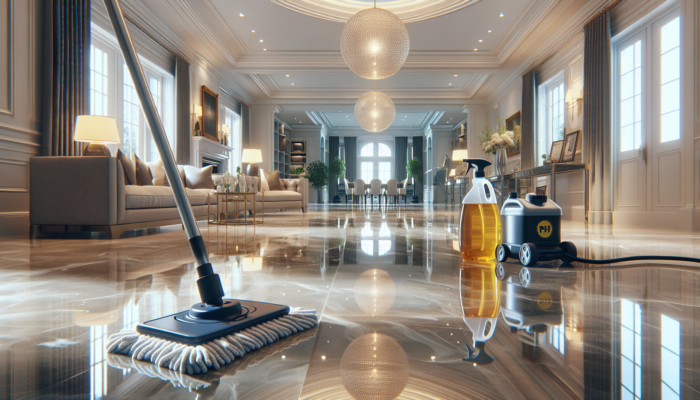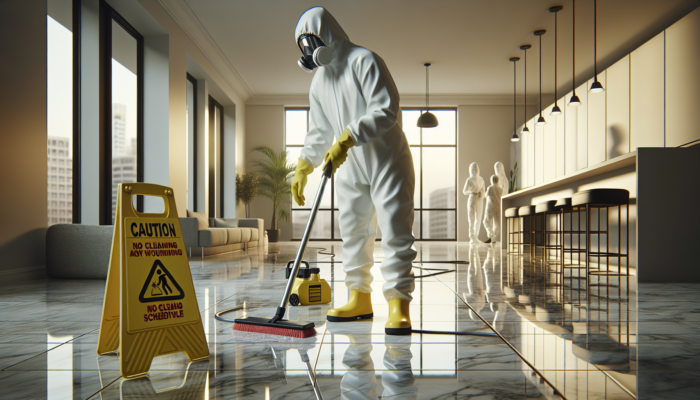Explore Exquisite and Diverse Marble Flooring Choices to Elevate Your Home’s Sophistication
Discover Unique Marble Varieties to Enrich Your UK Home’s Interior Design

When selecting the perfect marble to beautify your UK home, it is crucial to delve into the vast array of marble types available, each endowed with unique characteristics that significantly influence their cleaning and maintenance requirements. For example, Carrara marble, renowned for its classic grey and white hues, boasts a timeless appeal but is notably prone to etching from acidic substances, which makes it essential to adopt a meticulous maintenance routine. Conversely, Statuario marble stands out with its extraordinary veining patterns, representing another luxurious choice that requires careful upkeep to maintain its striking allure. Understanding the nuances of these marble varieties is indispensable for applying the most effective cleaning techniques, ensuring their longevity and aesthetic appeal. Homeowners should also consider the installation locations; spaces like kitchens and bathrooms necessitate rigorous cleaning practices due to their increased exposure to spills and moisture.
The choice of marble in the UK often mirrors both aesthetic aspirations and practical considerations. For instance, while a polished Carrara marble can substantially enhance the elegance of a living area, its glossy surface may not be suitable for high-traffic zones, where scratches could develop easily. Consequently, grasping the specific maintenance needs associated with various marble varieties is essential for effective marble floor cleaning. Developing a personalised maintenance strategy tailored to each marble type can avert long-term wear and tear, ensuring that the flooring remains a captivating visual element in any space, thus amplifying the overall charm of the property.
Understanding How Marble Finishes Affect Cleaning and Care Practices
The type of finish applied to your marble is a pivotal element that dictates the appropriate cleaning methods necessary for effective maintenance. A polished finish delivers a glossy, luxurious appearance but is more vulnerable to scratches and etching, particularly in bustling family settings. This finish typically requires gentle cleaning solutions, as abrasive products may strip away the lustre, leading to a dull surface. In contrast, honed marble, distinguished by its satin-like finish, is generally more forgiving and less likely to reveal imperfections, making it easier to maintain in areas with heavy foot traffic. Tumbled finishes, chosen for their rustic appeal, exhibit natural textures but can trap dirt and grime, requiring more thorough cleaning approaches.
By comprehending the various finishes, homeowners can select appropriate cleaning agents tailored to their specific requirements. For polished marble, it is essential to utilise soft mops and pH-neutral cleaners to safeguard the surface. In contrast, honed and tumbled finishes might benefit from slightly more abrasive cleaning techniques to effectively eliminate stubborn residues without harming the surface. Customising the cleaning approach based on the finish not only preserves the marble’s visual splendour but also prolongs its lifespan, making it a valuable investment for any household in the UK.
Key Steps to Accurately Identify Your Marble Type for Optimal Care
Correctly identifying the specific type and finish of your marble flooring is essential for effective maintenance and care. Homeowners can commence by closely examining the surface; polished marble typically showcases a reflective sheen, whereas honed marble presents a more subdued, matte finish. A simple water test can further assist in identifying the type; if water beads on the surface, it is likely polished, whereas absorption may indicate a honed or tumbled variant. Additionally, scrutinising the veining patterns and colour variations can facilitate accurate identification of the marble type, whether it is Travertine, Carrara, or another exclusive selection.
For UK homeowners, understanding the unique characteristics of their marble can significantly impact their cleaning practices. Once the type has been confirmed, suitable cleaning methods can be employed to ensure the marble remains vibrant and immaculate. If there is uncertainty regarding identification or maintenance, seeking professional services can provide invaluable insights, safeguarding your investment in these exquisite floors.
Developing Effective Marble Maintenance Routines for Enduring Beauty

Establishing a thorough maintenance schedule is essential for preserving the beauty and durability of marble floors in UK homes. For polished marble, a weekly cleaning routine using a soft mop and pH-neutral cleaner is recommended to prevent the buildup of dirt and etching. Conversely, honed and tumbled finishes may require more frequent cleaning to combat dirt accumulation, particularly in high-traffic zones where wear and tear become more apparent.
Moreover, conducting a comprehensive deep clean on a monthly basis is advisable, which may involve more intensive methods such as steam cleaning or utilising specialised marble cleaning products. Regular professional cleaning and maintenance are also beneficial, especially in areas prone to staining or excessive wear. By adhering to these structured maintenance schedules, homeowners can ensure their marble floors maintain a pristine appearance, ultimately enhancing the overall aesthetic value of their residences.
Thorough Preparation for Effective Marble Floor Cleaning
Gathering Essential Supplies for Efficient Marble Care
Before embarking on any marble floor cleaning endeavour, it is vital to collect the necessary supplies, readily available in UK retail outlets. The cornerstone of effective cleaning lies in utilising the appropriate tools and products. A soft-bristle broom or a microfibre mop is indispensable for daily maintenance, as these tools help prevent scratches while efficiently capturing dust and debris. When selecting cleaning agents, opting for pH-neutral solutions is advisable, as these will not harm the marble’s surface. Eco-friendly brands like Method and <a href="https://fabritec.org/marble-floor-cleaning-tips-and-techniques-you-need-to-know/">Ecover</a> offer excellent options that are safe for your flooring.
In addition to these cleaning products, having a soft cloth available for drying and buffing the surface after cleaning is wise. For more intensive cleaning tasks, consider investing in a steam cleaner specifically designed for natural stone, ensuring it operates at the appropriate temperature to avoid damaging your marble. Lastly, protective gear, such as gloves, should be included in your cleaning kit to shield your hands from any harsh chemicals, even when using milder solutions.
Implementing Safety Protocols During the Cleaning Process

Cleaning marble floors requires caution to prevent surface damage and personal injury. Always wear protective gear, including gloves and knee pads, especially when kneeling during cleaning tasks. Ensure that the cleaning area is well-ventilated, particularly when using cleaning solutions. It is essential to read product labels carefully and follow the manufacturer’s instructions to avoid accidents and mishaps.
Furthermore, being mindful of slippery surfaces during and after cleaning is crucial. Informing all household members about the cleaning schedule can help prevent accidents, especially in homes with children or elderly residents. By taking these safety precautions, you not only protect your marble but also create a safe cleaning environment for everyone involved.
Conducting a Comprehensive Pre-Cleaning Inspection for Optimal Results
Before commencing a cleaning session, it is vital to perform a thorough inspection of your marble floor. Look for any signs of damage, such as cracks, chips, or dull spots that may necessitate specialised treatment before regular cleaning can proceed. Additionally, identify any stains or heavily soiled areas that require focused attention to prevent them from becoming permanent.
In the UK, where homes are subject to varying weather conditions, it’s imperative to inspect the floor for signs of water damage or moisture accumulation, particularly in damp areas such as basements or bathrooms. Addressing these issues prior to cleaning ensures that the floor is not only clean but also structurally sound. Furthermore, noting specific problem areas can assist in tailoring your cleaning approach, ensuring that your marble floors receive the specialised care they require.
Establishing Daily Maintenance Practices for Immaculate Marble Floors
Creating a Consistent Routine for Sweeping and Dusting
Implementing a daily regimen that incorporates sweeping and dusting is crucial for preserving the immaculate condition of marble floors. Accumulated dust and dirt particles can easily scratch the surface if left unattended, detracting from the floor’s natural beauty. Utilising a soft-bristled broom or a microfibre mop is highly recommended, as these tools are gentle and efficient in capturing debris without causing damage to the marble.
In particularly high-traffic areas, such as hallways or living rooms, daily upkeep becomes even more critical. Dedicating just a few minutes each day to this simple task can markedly extend the lifespan of your marble floors. Cultivating a habit of regular cleaning helps prevent build-up, which could necessitate more intensive cleaning efforts later on. Incorporating this practice into your daily routine can be effortless, ensuring that your marble retains its elegant appearance over time.
Mastering Effective Spot Cleaning Techniques for Immediate Response
Accidents are an inevitable part of life; hence, mastering the technique of spot cleaning on marble floors is essential for homeowners in the UK. Spills should be swiftly addressed to avert staining. The recommended approach involves gently blotting the affected area with a clean, dry cloth to minimise rubbing, as this can drive the liquid deeper into the marble surface.
For more stubborn stains, a simple mixture of baking soda and water can serve as an effective spot treatment. Apply the paste to the stain, allow it to sit for several hours, and then gently wipe it away using a soft cloth. This method is particularly beneficial for common stains such as wine or juice. Regularly checking for and spot cleaning stains can significantly reduce the risk of permanent damage, ensuring your marble floors maintain their beauty as they did upon installation.
Understanding the Crucial Importance of pH-Neutral Cleaners for Marble Care
Utilising pH-neutral cleaners is vital for preserving the integrity of marble flooring. Conventional cleaners often contain acids or harsh chemicals that can etch or dull the stone's surface, potentially leading to costly repairs. In the UK, numerous brands offer pH-neutral options specifically designed for natural stone, effectively delivering cleaning results without associated risks.
Incorporating these gentle cleaners into your routine ensures that your marble floors remain vibrant and free of residue. Their mild formulation is safe for daily use, making them an excellent choice for maintaining the shine of polished marble. Consistent use of pH-neutral cleaners can help avert the accumulation of dirt and grime, keeping your marble looking pristine while extending its longevity and aesthetic appeal.
Implementing Thorough Deep Cleaning Procedures for Marble Floors
Selecting the Most Suitable Cleaner for Effective Deep Cleaning
Choosing an appropriate deep cleaning solution for your marble floors is imperative for achieving optimal results without compromising the surface. In the UK, a wide array of products caters specifically to marble cleaning needs. Look for cleaners that are non-abrasive and formulated for natural stone surfaces. Brands like StoneTech and Aqua Mix provide high-quality options that deliver thorough cleaning while safeguarding the integrity of your marble.
When selecting a deep cleaner, take into account the specific finish of your marble. For instance, honed marble may benefit from a slightly more abrasive product compared to a polished surface. Always opt for pH-neutral formulations to prevent any etching or dulling of the finish. By carefully choosing the right product, you can ensure a deep clean that revitalises your marble floors while maintaining their natural beauty and allure.
Steps for Conducting an Effective Deep Cleaning Process for Marble Floors
The deep cleaning procedure for marble floors should be approached methodically to achieve the best possible results. Begin by thoroughly sweeping or vacuuming the surface to eliminate all dust and debris. Next, prepare your chosen cleaner according to the manufacturer’s instructions. Using a soft mop or cloth, apply the cleaner evenly across the floor to ensure comprehensive coverage.
Allow the cleaner to sit for the recommended duration to effectively penetrate tough stains or grime. Following this period, utilise a clean mop with warm water to rinse the surface, ensuring that all cleaning solutions are completely removed. This step is crucial; any residue left behind can lead to dullness or attract dirt. Once cleaned, use a dry microfibre cloth to gently buff the surface, restoring its shine and eliminating any remaining moisture. This thorough approach to deep cleaning will leave your marble floors looking revitalised and beautiful.
The Significance of Thorough Drying and Buffing After Deep Cleaning
After deep cleaning your marble floors, it is essential to ensure they are completely dried and buffed to maintain their radiant appearance. Utilising a clean, soft cloth for drying helps prevent water spots or streaks from forming. For polished marble, buffing becomes particularly crucial to restore that high-gloss finish that many homeowners cherish and desire.
Employing a gentle, circular motion while buffing can effectively enhance the shine without causing any scratches. Alternatively, consider using a floor buffer designed specifically for marble in larger areas, as this can expedite the task and yield more efficient results. This final step not only enhances the visual appeal of your marble floors but also protects them from future wear and tear, ensuring they maintain their beauty for years to come.
Expert Techniques for Efficient Stain Removal from Marble Floors
Recognising and Identifying Various Stain Types on Marble
Understanding how to identify common stains on marble floors is crucial for effective removal. Organic stains, such as those caused by food or drink, can often be tackled with gentle cleaning solutions. In contrast, inorganic stains, like rust or hard water deposits, may require more intensive treatment. In the UK, common culprits include wine, coffee, and oils, which can leave unsightly marks if not promptly addressed.
Comprehending the origins of the stains can significantly influence the cleaning method utilised. For instance, oil-based stains often necessitate a different approach than those arising from acidic substances. By accurately identifying the type of stain, homeowners can select the appropriate cleaning product or technique to effectively resolve the issue without further damaging the marble surface.
Utilising Effective Techniques for Marble Stain Removal
Successfully removing stains from marble floors necessitates tailored techniques that are specific to the type of stain present. For organic stains, such as those from wine or coffee, a simple mixture of baking soda and water can be remarkably effective. Apply the paste to the stain, allowing it to sit for several hours before gently wiping it away with a soft cloth.
For more stubborn stains, employing a poultice can be advantageous, as it works to draw the stain out of the marble. This involves mixing a cleaning agent with an absorbent material, such as talc or flour, and applying it to the stained area. Cover the poultice with plastic wrap to create a seal, allowing it to work overnight. This method is effective for both organic and inorganic stains, ensuring that your marble remains pristine and beautiful for years to come.
Strategies for Preventing Future Stains on Your Marble Floors
Prevention is the most effective strategy for maintaining the beauty of marble floors and avoiding future stains. Regularly sealing the marble helps create a protective barrier against spills and stains. In the UK, it is advisable to reseal marble floors every six months to a year, depending on foot traffic levels and exposure to spills and moisture.
Implementing a diligent cleaning routine is also beneficial; promptly addressing spills and using coasters under beverages can greatly reduce the risk of staining. Additionally, placing mats in high-traffic areas can help capture dirt and debris, preventing scratches and stains from occurring in the first place. By adopting these preventive measures, homeowners can enjoy their marble floors without worrying about unsightly stains compromising their beauty.
Selecting the Right Products for Effective Stain Removal
When choosing cleaning products for stain removal on marble floors, it is crucial to make informed decisions to avoid damaging the surface. Look for specialised marble cleaners specifically designed to tackle stains without causing etching. Products that are pH-neutral and free from harsh chemicals are ideal; brands like Stone Care International provide excellent solutions for both cleaning and stain removal.
In addition to commercial products, DIY solutions such as baking soda or gentle dish soap can be effective but should be used with caution. While vinegar is effective on many surfaces, it is too acidic for marble and can cause significant damage. Instead, utilise baking soda, aquamarine soap, or mild dish soap for efficient cleaning without harming your beautiful marble surface. By carefully selecting cleaning products, you can ensure the longevity and visual appeal of your marble floors.
Engaging Professional Stain Removal Services for Persistent Stains
In certain circumstances, stubborn stains may require the expertise of professional stain removal services. When standard cleaning methods prove ineffective, seeking the assistance of professionals can save you both time and frustration. In the UK, numerous reputable companies specialise in marble restoration, offering services that encompass deep cleaning, polishing, and even repairing cracks or chips.
It is essential to choose a professional service with a solid reputation and positive customer feedback. Verify that they implement industry-standard techniques and products that are safe for your specific type of marble. Investing in professional services for challenging stains can help restore your floors to their original grandeur, ensuring they continue to be a stunning feature in your home for many years to come.
Polishing and Sealing Your Marble Floors for Enhanced Protection and Radiance
Recognising When to Polish Your Marble for Optimal Shine
Determining the appropriate time to polish your UK marble floor is vital for maintaining its stunning appearance. Indicators that your marble requires polishing include dullness or a noticeable lack of shine, typically resulting from wear caused by foot traffic, cleaning products, or environmental factors. Additionally, if scratches or etching are visible, it may be time to contemplate polishing to restore the floor’s original luster and elegance.
Generally, polished marble should be maintained every six months to a year, depending on usage patterns. Homes with significant foot traffic or exposure to considerable dirt and moisture may require more frequent polishing to uphold their pristine condition. By adhering to this maintenance schedule, homeowners can ensure that their marble floors remain vibrant and inviting, ultimately enhancing the overall aesthetic appeal of their homes.
Exploring Various Polishing Techniques Suitable for Marble Floors
Several polishing methods are appropriate for UK marble floors, each offering distinct advantages based on the type of marble and its finish. For instance, dry polishing pads can effectively remove light scratches and restore shine, particularly on polished surfaces. In contrast, wet polishing techniques may be necessary for more substantial repairs, allowing for deeper cleaning and restoration.
Furthermore, some homeowners may opt for professional polishing services, especially for larger areas or extensive damage. These services typically employ advanced methods and equipment, ensuring a flawless finish that can be challenging to achieve independently. Regardless of the method chosen, frequent polishing is vital for maintaining the stunning appearance of your marble floors, helping to preserve your investment in this luxurious material.
The Critical Importance of Sealing Your Marble Floors for Long-Term Protection
Sealing marble floors in the UK is an essential step in preventing stains and extending the surface's lifespan. A high-quality sealant forms a protective barrier that helps repel moisture and spills, simplifying ongoing maintenance efforts. It is advisable to seal marble floors every six months to a year, depending on usage patterns and the specific conditions of your home.
When sealing, ensure that the surface is clean and dry before applying the sealant. Follow the manufacturer’s instructions for the specific sealant chosen, as some products may require multiple coats for optimal protection. Regular sealing not only safeguards against stains but also enhances the marble’s natural beauty, ensuring that your floors remain a luxurious feature in your home for years to come.
Addressing Common Challenges Associated with Marble Floors
Managing Etching and Scratches to Preserve Marble Surface Integrity
Etching and scratches are frequent concerns faced by marble floor owners in the UK. Etching, often caused by acidic substances like lemon juice or vinegar, results in dull spots that mar the marble’s otherwise flawless finish. Scratches may occur due to everyday wear and tear, particularly in high-traffic areas. Recognising these issues early is essential for effective treatment and restoration.
To address etching, polishing compounds can be effectively employed to restore the sheen. For superficial scratches, a gentle buffing with a soft cloth can often lessen their visibility and restore the surface's integrity. In more severe cases, professional services may be necessary to fully restore the marble's surface. Regular maintenance and prompt attention to these concerns can significantly prolong the beauty and lifespan of your marble floors, ensuring they remain an attractive feature of your home.
Combating Dullness and Wear for Lasting Impressions
Dullness and wear can detract from the allure of marble floors, making it essential to understand the causes of these issues. Factors such as improper cleaning methods, the use of harsh chemicals, or excessive foot traffic can contribute to a lack of shine. To combat this, establishing a consistent cleaning and maintenance routine is paramount for homeowners seeking to preserve their marble’s natural beauty.
Regular polishing can effectively counteract dullness, restoring the floor’s radiant shine. Moreover, employing pH-neutral cleaners will help prevent further wear and tear caused by harsh chemicals. If dullness persists despite regular care, consulting a professional for deep cleaning and polishing services may be necessary, ensuring the floor remains a stunning focal point in your home for years to come.
Repairing Cracks and Chips: Essential for Long-Term Maintenance
Identifying and repairing cracks and chips in marble floors is vital for maintaining their long-term aesthetic appeal. These damages may arise from heavy impacts or temperature fluctuations. Small chips can often be repaired using an epoxy filler specifically designed for marble surfaces, while larger cracks may necessitate professional assessment and care.
Regular inspections can help catch these issues early, preventing further damage and ensuring the marble retains its beauty. Additionally, homeowners should consider placing mats or rugs in high-traffic areas to minimise the risk of new chips or cracks developing. Proactive care and timely repairs can keep your marble flooring looking beautiful and well-maintained for years to come, enhancing the overall value of your home.
Leveraging Professional Services for Comprehensive Marble Floor Care
Identifying the Right Time to Seek Professional Assistance
Recognising when to engage professional services for your marble floor can save time and ensure optimal results. Signs that professional intervention may be required include significant staining, extensive etching, or deep scratches that cannot be rectified through conventional cleaning methods.
If your marble floors appear dull despite regular maintenance, or if you notice cracks or chips that cannot be repaired, it is advisable to consult a professional. These experts possess the tools and knowledge necessary to restore your marble to its original splendour, ensuring that it remains a stunning feature in your home. Proper care and timely professional services can extend the life of your marble floors, preserving their beauty for generations to come.
Frequently Asked Questions About Marble Floor Care
Which Cleaners Are Most Effective for Marble Floors?
The most effective cleaners for marble floors are pH-neutral solutions that won’t etch or damage the surface. Brands such as StoneTech and Ecover provide effective options specifically designed for marble care.
How Often Should I Seal My Marble Floors?
It is advisable to seal your marble floors every six months to a year, depending on the level of foot traffic and exposure to spills, to maintain protection against stains.
Is Vinegar Safe to Use for Cleaning Marble Floors?
No, vinegar is too acidic for marble and can cause etching. Instead, opt for pH-neutral cleaners specifically formulated for natural stone to ensure proper care and maintenance.
What Steps Should I Take if My Marble Floor is Scratched?
For light scratches, buffing with a soft cloth can help remove them. Deeper scratches may require polishing compounds or professional services for effective restoration.
How Can I Prevent Stains on My Marble Floors?
Preventing stains can be achieved by regularly sealing your marble, promptly cleaning spills, and using mats in high-traffic areas to protect the surface.
Is Professional Cleaning Necessary for Marble Floors?
Professional cleaning is recommended if you notice deep stains, extensive etching, or dullness that regular maintenance cannot effectively resolve.
What Symptoms Indicate That My Marble Needs Polishing?
Signs that your marble needs polishing include dullness, visible scratches, or a lack of shine, often indicating wear from foot traffic and cleaning practices.
Can I Use a Steam Cleaner on My Marble Floors?
Yes, but ensure the steam cleaner is specifically designed for use on natural stone, as improper use can cause damage to the surface.
How Long Does It Typically Take to Deep Clean Marble Floors?
The time required for deep cleaning marble floors typically ranges from one to three hours, depending on the size of the area and the extent of the cleaning required.
What Should I Do If My Marble Floors Have Stubborn Stains?
For stubborn stains, consider using a poultice or consult a professional service, as they have specialised methods for effective stain removal.
The post Marble Floor Cleaning: Essential Tips and Techniques appeared first on https://tilecleaningsurrey.co.uk
The Article Marble Floor Cleaning Tips and Techniques You Need to Know appeared first on https://fabritec.org
The Article Marble Floor Cleaning: Essential Tips and Techniques Was Found On https://limitsofstrategy.com
The Article Marble Floor Cleaning Tips and Techniques You Need to Know found first on https://electroquench.com

